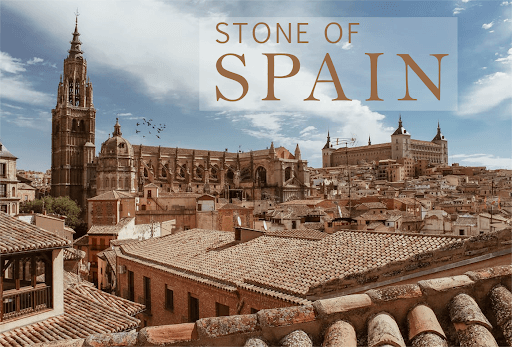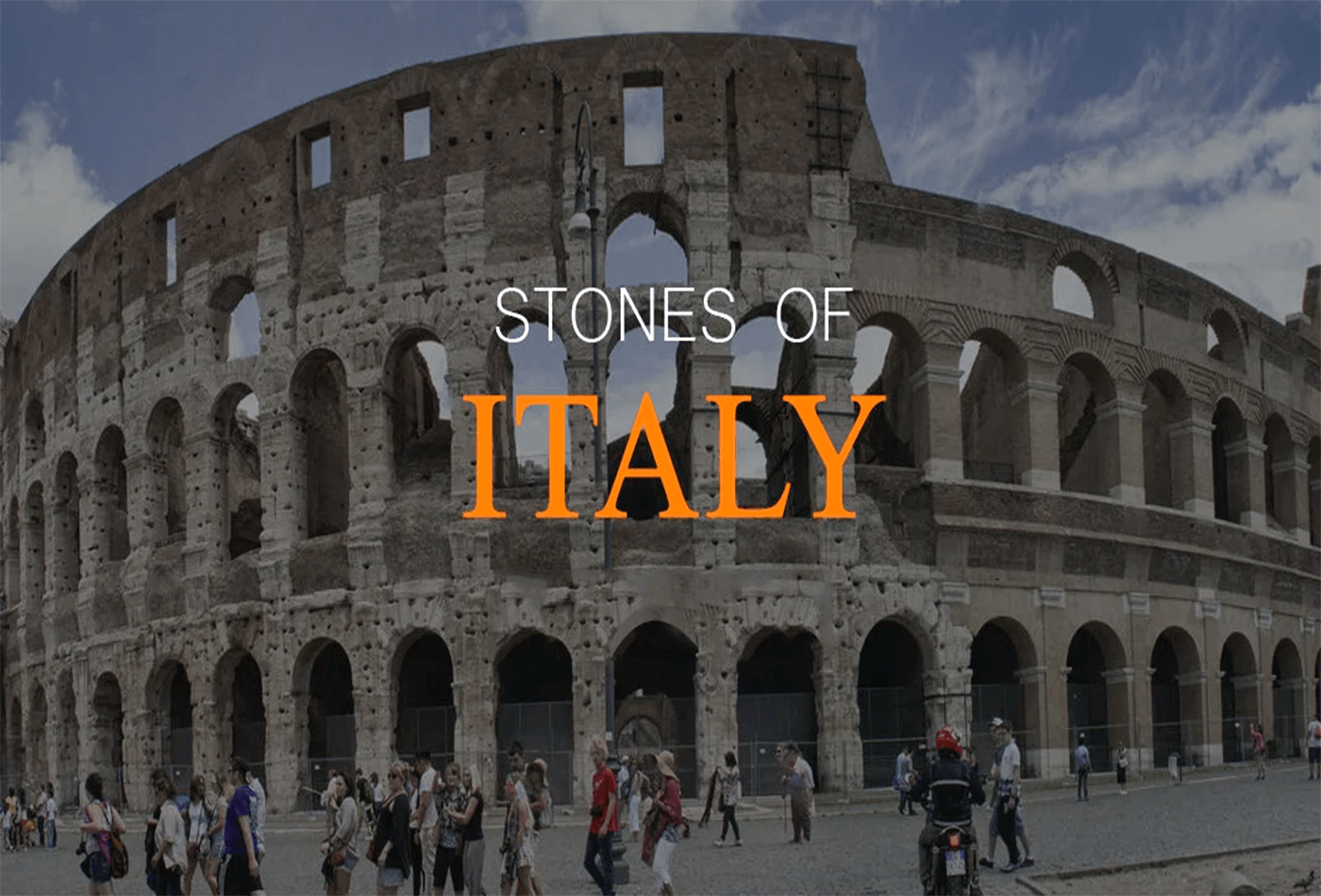Table Of Contents
Stones of Spain homes were traditionally built with adobe or mud-brick, durable and extremely heavy. These houses have red-tiled roofs and clean stucco walls. Monterey, Mission style and Moorish are the terms used for building styles in Spain.
Stones Of Spain

Granite
Granite is one of Spain's most abundant Natural Stones and has been used extensively in Spanish architecture. Its durability and sustainability to wear make it a popular choice for countertops, flooring, and exterior cladding.
Marble
Stones Of Spain is known for its high-quality marble, particularly from regions like Macael in Almeria and Carrara in Alicante. Spanish marble is famous for its exceptional quality and is widely used for home flooring, countertops, and decorative elements.
Slate
Slate, sourced from regions like Galicia and Asturias, is commonly used for roofing materials in Spanish homes. Its natural resistance to water and durability make it a practical choice for protecting homes from the elements. Slate can also be used for flooring and wall cladding, particularly in rustic and traditional-style homes.
Limestone
Spain has several limestone varieties, such as Crema Marfil and Caliza Capri. These stones are often used for interior and exterior applications, including flooring, wall cladding, and architectural elements like columns and fireplaces. Limestone offers a warm and elegant look to homes.
Sandstone
Sandstone in regions like Salamanca and Ciudad Real is appreciated for its versatility and natural charm. It can be used for wall cladding and landscaping features, adding a rustic and earthy touch to homes.
Quartzite
Quartzite, though less common than other stones, is known for its durability and unique patterns. It is often used for kitchen surfaces, bathroom vanities, and accent walls to add a touch of sophistication to modern homes.
Basalt
Basalt is a volcanic stone found in regions like the Canary Islands. It is prized for its dark colour and natural resistance to heat and wear. Basalt is commonly used for outdoor paving, such as patios and walkways, and interior flooring in some contemporary-style homes.
COLONIAL GOLD GRANITE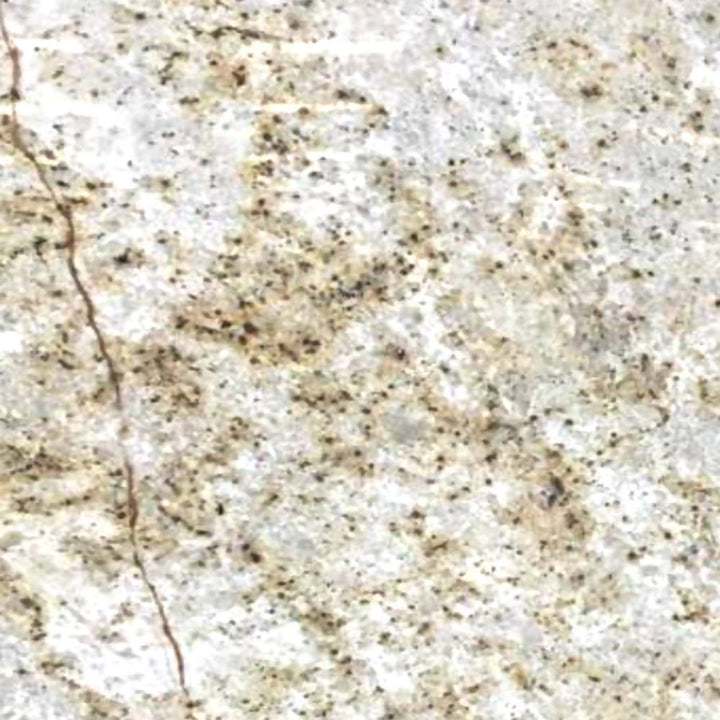
£343.70 Colonial Gold Granite has a warm off-white base colour and veining in tones of gold, grey, and brown that give this natural stone a particularly luxurious appearance and texture.Colonial Gold Granite is one of the most widely used options for… read more |
NERO STATURIO QUARTZ
£309.52 Nero Staturio Quartz is a fashionable and adaptable black surface material replicating the beauty of real marble. Usually with dramatic, contrasting veining in grey or black tones, it has a background that is white or bright in colour. It is… read more |
CARRARA GIOIA BOOKMATCH MARBLE
£395.00 Carrara Gioia Bookmatch Marble is a natural stone from Carrara, Italy. It has a soft grey and white veining pattern, a white background and a subtle hint of light grey. Composition: This marble comprises calcite, dolomite and quartz, creating a… read more |
Other Elements Of Spanish Architecture
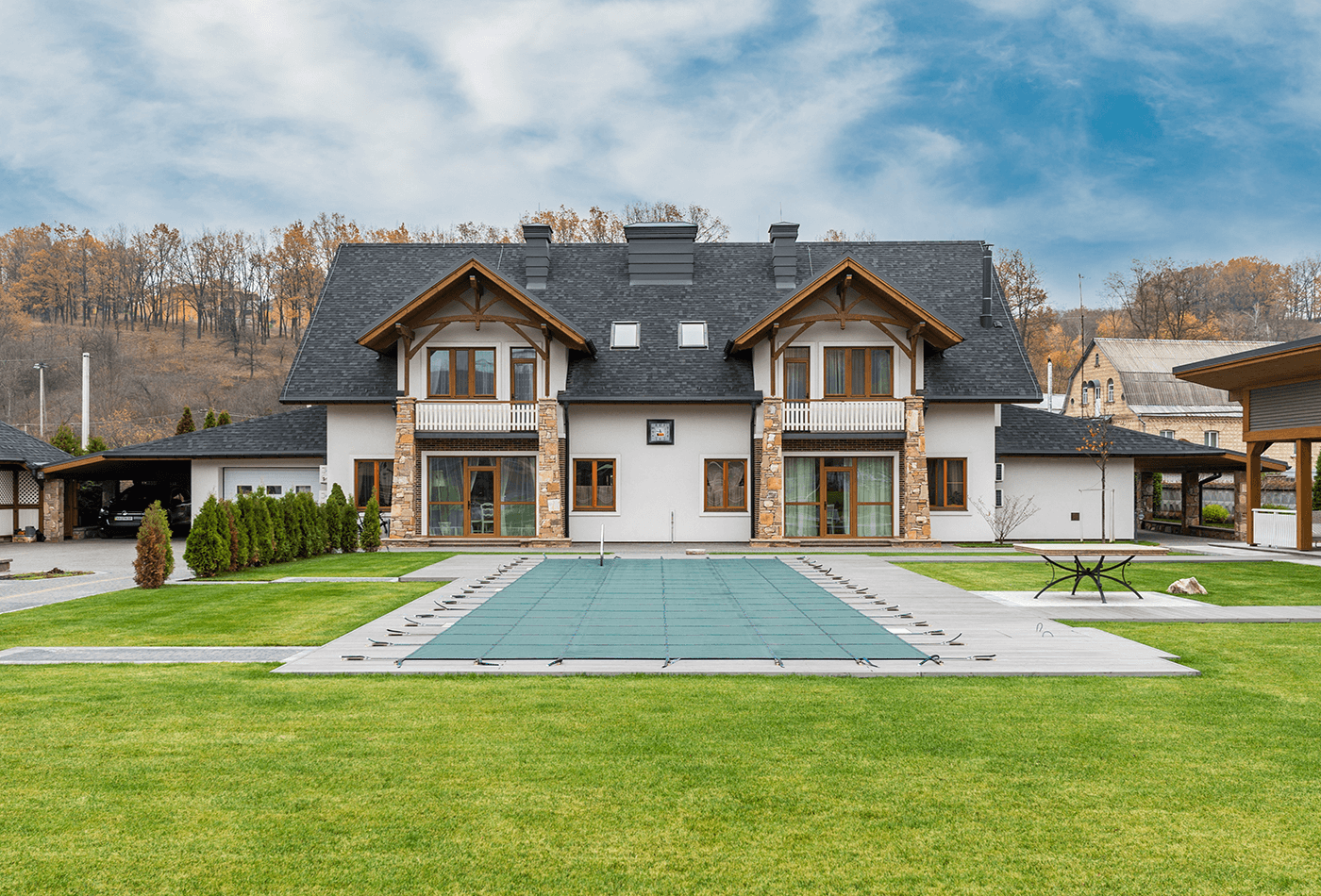
Arcades, Courtyards and Patios, Ornamental ironwork, Balconies, and Tower Chimneys are the other pivotal elements of Spain's architecture.
Stone Usage And Durability

According to Bell (1993), the endurace of a building stone is a measure of its capability to resist weathering and thus retain its original size, shape, strength, and appearance over an extended period. As-built heritage materials resist decay differently; special care is required if constructions last for an extended period. The specific resistance of each type of stone is determined by its petrophysical properties such as density, water absorption, porosity accessible to water/Hg percentage, microporosity percentage, and so on.
Spanish Stone Formations That Need Attention: Highly Appealing
Spain has given place to many varieties of natural stones in the past, which has added to its heritage and culture. The proximity factors of geological resources decided the usage of stones for construction in Spain in the past; current technological advancements in the stone industry in Spain drastically increased the usage of natural and engineered stones.
Flint is a natural stone available locally in Spain, and this particular stone material was primarily used as a building material between the 9th and 11th centuries. Then came Dolostone's invasion, which occupied the construction industry until the 17th century.
(Flint - Natural stone of Spain)

(Granite Formation - Guadarrama Mountain range)
After the 17th century, the Guadarrama Mountain range's large granite reserves came into use. Granite was mainly quarried in the Alpedrete area. Granite stones are traditionally called Berroque in Spain.

(Limestone Quarry in Spain)
Limestone, known as Colmenav stone with Baroque, became one of Madrid's traditional building stones. They are used today for their durability.
Alpedrete Monzogranite, Zarzalejo Monzogranite, Reduefia Dolostone, Torrelaguna Dolostone, Colmenar Limestone, Flint, and Bernardos slate are the stones of Spain to reign over the industry.
Times before the Industrial Revolution and the rise of technocratic criteria, the aesthetic features of stones, primarily the colour, became value factors. The preferred colour of stones varies with fashion and the tastes of builders and architects.
The region of Madrid has two groups of materials, distinguished as
The igneous and metamorphic rocks of the Guadarrama Mountains in the north and north-west provide the widest varieties of granite, slate and porphyry;
The sedimentary rocks comprise Cretaceous limestones and Dolostone in the north, Miocene limestones in the southeast and Flint near the city of Medina.
GASCOIGNE BEIGE LIMESTONE
£258.65 Gascoigne Beige Limestone is an ideal choice for flooring and wall cladding. It has a unique blend of light and dark beige tones with a subtle grain pattern. This limestone is composed mainly of calcite and dolomite, making it a… read more |
JURA BEIGE LIMESTONE
£266.75 Jura Beige Limestone is a beige sandstone from Germany notable for its hardness and richness of fossils. the traditional colour of Jura Limestone This product is mostly used for interior floors and staircases. The limestone's hardness and density allow it… read more |
Spanish Stones:
Alpedrete Monzogranite
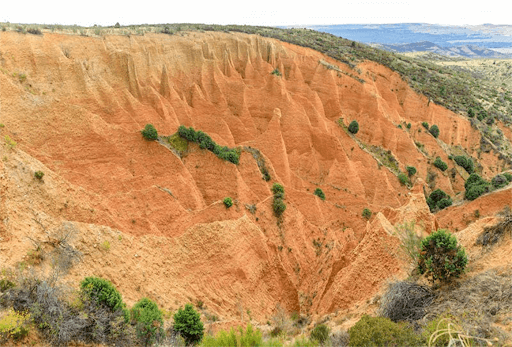
A nomination for the Global Heritage stone resource. It is quarried in the Sierra de Guadarrama foothills the province of Madrid. This is the best Granite in Spain.
(Alpedrete Monzogranite - Granite of Spain)
Zarzalejo Monzogranite
It is a stone with excellent petrophysical properties and has proven durability. This granite is quarried in the Spanish central range, and today, it is known as Blanco Rafaela.
Dolostone

Dolomite, also known as Dolostone, is a sedimentary rock composed primarily of dolomite, CaMg(Co3)2. It is found in sedimentary basins worldwide. It is formed by lime and mud limestone by magnesium-rich groundwater.
(Dolomite - Spain Mineral Specimen)
Colmenar Limestone
Limestone is one of the traditional construction stones, mostly used in Madrid. It is known for its long-term durability.
Stromboli Granite
Stromboli Granite is black granite with beautiful golden veins throughout the stone. It is a very popular choice and brings timeless beauty Into every kitchen. Get a free quote with the fastest delivery around the UK.
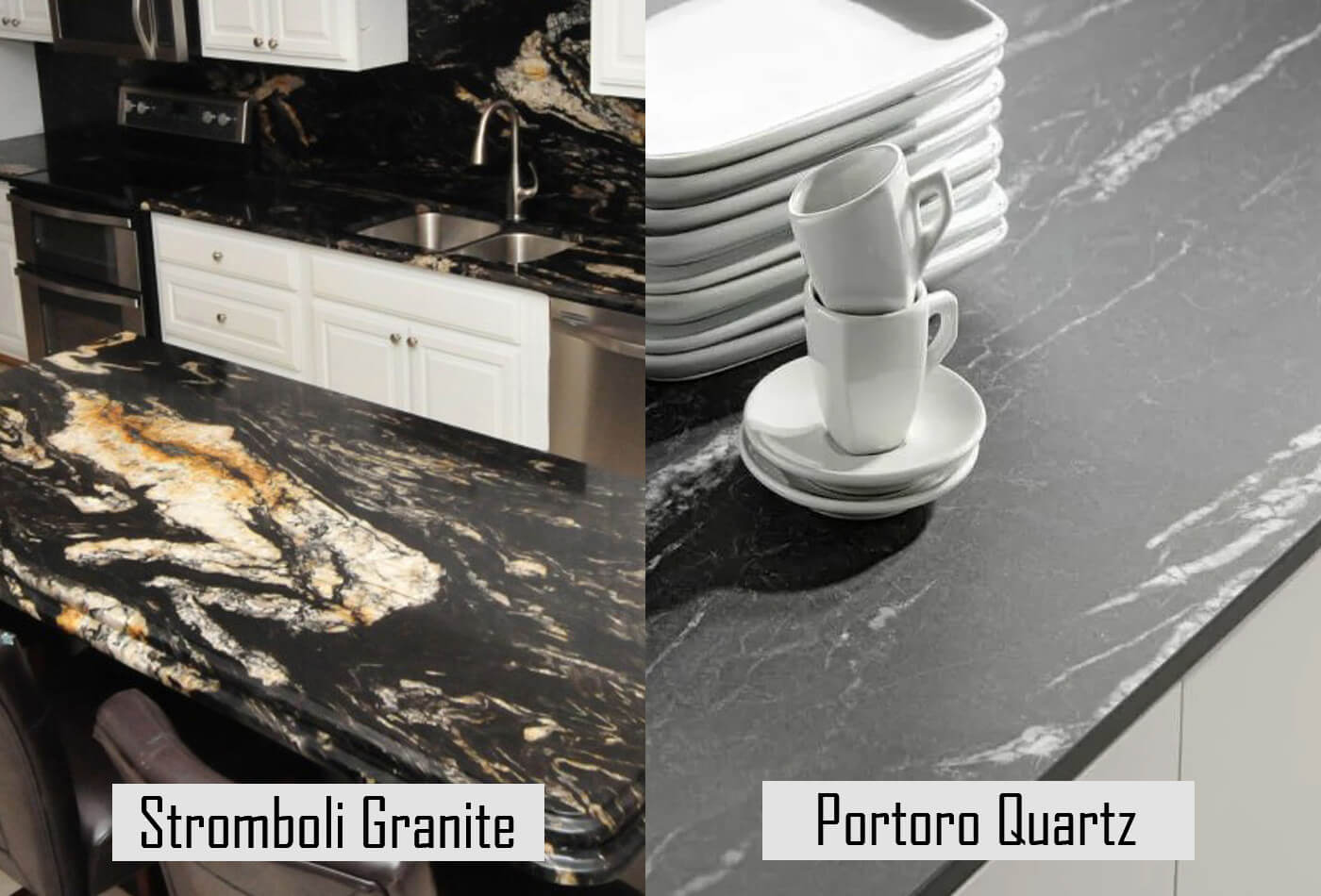
Unique Portoro Quartz
Unique Portoro Quartz is pure black quartz with grey veins, making your kitchen even more special. These stones are people's favourite as black is a go-to colour for every homeowner, and it hides stains and scratches and looks clean and fresh.
UNIQUE PORTORO QUARTZ
£482.60 Unique Portoro Quartz has a deep black grained background with a mix of sharp and wispy veins. Because the pattern is dark, vivid, and dramatic, it would complement plain, light units well. It belongs to our collection of best-in-class worktop… read more |
EVORA FOSSIL LIMESTONE
£254.60 Evora Fossil Limestone has a white base which is adorned with grey patches at random places. This slab surface can blend into any kitchen or bathroom. It is given a dazzling finish that makes a perfect addition in both residential… read more |
Flint
Flint is a sedimentary cryptocrystalline form of the mineral quartz. Its usage dates back to millions of years. It was one of the first materials used to make tools by early people. They form as concretionary masses and less frequently as a layered deposit. It is called 'Chert' by geologists. In the older days of firearms, Flint was used as a source of fire.
It was the first construction material in Spain. Flintstones resist weathering better than almost any other natural stone.
Quartz Phyllite

(Quartz Phyllite of Spain)
The character and the value of modern and historic buildings lie in the quality of their materials, and no other stone is more versatile and noble than the Quartz Phyllite. In construction, the multicoloured Bernardos slate stones get the appearance of Aged textures; you make roof tiles, you get cobbles, you get split face tiles. Get Sawn finished, polished, Riven, etc., at the hands of Fabricators. With its ten slate districts, Spain is the most crucial producer of slate worldwide.
History Of Spanish Natural Stones Goes Beyond Horizon

(Spanish Stonehenge)
More than 1,000 companies are devoted to working with marble, granite and Slate in Spain, along with almost 700 quarries for materials. Today, the Spanish natural stone industry, founded on extracting natural stone and its transformation and elaboration, has become a point of reference within the world stone industry. The quantity of stone produced and the quality of Spain's products make this country one of the world leaders in the field. According to the presentations at the Piedra 2008, the international trade fair in Madrid, Spain, its production value comes to 3.5 billion euros, that is US $5.5 billion. Most companies operating in the industry are small and medium-sized enterprises, which constitute a good part of the industrial fabric in Spain. The companies in the industry provide 35,000 direct jobs and 100,000 indirect jobs. It is mainly because of the considerable geological wealth of the Iberian Peninsula, particularly helping the exports to swell. It is one of the leading exporters of natural stone to countries like the US, Mexico, Germany, France, the UK and Ireland. Their competitors are countries like China, India, Egypt and Turkey on the international markets.
As per one of the reports presented concerning the destination of Spain's exports, In terms of monetary value, 68% of the export value is shipped within the European Union, mainly France 27%, the UK 13%, and Germany 10%. The US 14%, China 9% and the United Arab Emirates 4% are Spain's main non–EU clients in terms of export value.
Regarding exports according to volume, China is the main destination with 26%. Followed by France at 20%, the UK at 10%, Italy, Ireland, Germany and Portugal.
With the imports, China is Spain's most important trade partner, accounting for 25% of the import value figure. Imports from the European Union account for another 28%, mainly from Italy and Portugal. Other important countries with import values are Turkey 14%, India 12% and Brazil 11%
P.s. The readers are informed that none of the content available on any of the pages of Work-tops.com should be taken as legal advice and that Work-tops will not be held accountable for your use of the information contained in or linked from these web pages.

